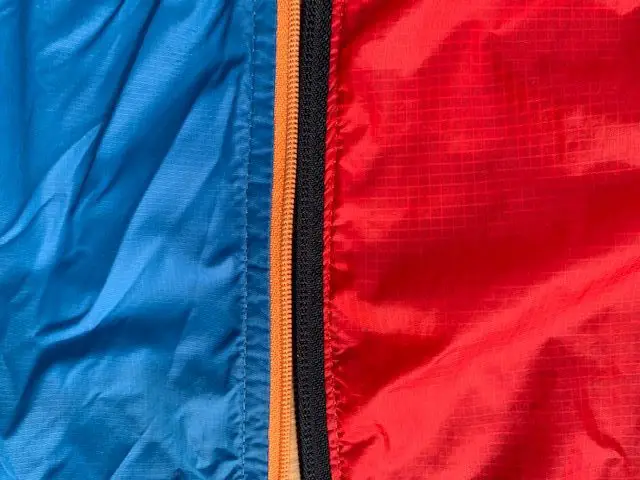Are you looking to keep cool during your next camping trip? Insulating a tent for air conditioning can be the perfect way to beat the heat and enjoy some comfort in your backyard or even when camping (glamping?) in the wild.
To insulate a tent for AC, there are several options:
1. Choose the right tent: Opt for a tent with a high-quality, waterproof, and breathable fabric. A tent with a double-wall construction and a full-coverage rainfly will provide better insulation.
2. Select the appropriate AC unit: Choose a portable air conditioner with the right BTU (British Thermal Units) capacity for your tent size. Ensure it has a built-in air filter and a low noise level.
3. Insulate the tent floor: Use a thick, closed-cell foam or an insulated sleeping pad to create a barrier between the ground and the tent floor. This will help retain cool air inside the tent.
4. Seal the tent doors and windows: Close all mesh windows and doors tightly to prevent cool air from escaping. Use weatherstripping or adhesive foam tape to seal any gaps around the zippers and openings.
5. Create a barrier for the AC unit: Place the AC unit on an elevated platform or a sturdy table to keep it off the ground. Build a makeshift barrier around the AC unit using reflective insulation material, such as Reflectix, to direct cool air into the tent and prevent it from escaping.
6. Insulate the tent walls and ceiling: Attach reflective insulation material to the interior walls and ceiling of the tent using adhesive tape or Velcro. This will help retain cool air inside the tent and reflect heat away from the tent.
7. Vent the AC exhaust: Ensure the AC unit’s exhaust hose is properly vented outside the tent to prevent hot air from accumulating inside.
8. Use a tent fan: Place a battery-operated or rechargeable tent fan inside the tent to help circulate cool air evenly.
9. Maintain the AC unit: Clean the air filter regularly and ensure the AC unit is functioning efficiently to maintain optimal cooling performance.
10. Optimize your setup: Position your tent in a shaded area, avoid direct sunlight, and keep the tent well-ventilated to maximize the efficiency of the AC unit.
As an outdoor expert, I’m here to tell you that it’s not as hard as you may think! With just a few simple steps, you’ll be able to insulate your tent like a pro and have yourself a perfectly cooled space for enjoying nature without worrying about sweat or bugs.
So if you’re ready to take full advantage of all that Mother Nature has to offer, let’s get started on how to insulate your tent for AC. You’ll learn which materials work best, what tools you need, and even some tips from me along the way!
Before long, you’ll have your very own cozy little oasis in no time – making those summer camping trips much more enjoyable than ever before.
Preparing For Insulating Your Tent
When choosing an insulation material for your tent, ventilation and temperature control should be top priorities. Make sure you pick a fabric that can keep the inside of your tent warm in cooler temperatures while allowing air to flow through on hotter days.
Different types of insulation are available, such as synthetic or down filled blankets and pads; each has its own benefits and drawbacks so it is important to do some research beforehand.
The type of insulation you choose will depend largely on personal preference and budget constraints- but ultimately, it must provide adequate protection from external elements without compromising the comfort level inside the tent.
Consider what kind of weather conditions you may encounter during your camping trip; having an insulated tent can make all the difference between a cold night outdoors and a cozy one!
Materials For Tent Insulation
When it comes to tent insulation, there’s no shortage of materials you can use. Synthetic fibers like polyester and nylon are great for insulation because they trap heat and retain warmth.
Reflective foils are also great for insulation because they act as a barrier against the cold. Non-conductive fabrics like wool and fleece will help keep your tent warm too.

Breathable membranes like Gore-Tex are also great for insulation and keeping the tent from getting too hot.
Bubble wrap is another great option for insulating a tent–it’s lightweight, cost-effective and easy to install. Padding materials like cotton or synthetic batting can also help keep tent temperatures steady.
Thermal liners are another great choice for insulation–they keep the tent cool in the summer and warm in the winter. Heat-resistant fabrics like Kevlar are good for keeping the tent temperature regulated, too.
Radiant barriers and radiant foils are also great for insulation–they act as a barrier to the cold air outside. Solid foam and loose insulation are also good materials for tent insulation, both providing good insulating properties.
Rigid foam panels are another option for insulation–they’re lightweight, durable and provide excellent insulating properties.
Aerogel is a unique material that provides excellent insulation, as well as being lightweight. And finally, space blankets are great for insulating a tent–they’re lightweight, reflective and provide good insulation properties.
All these materials can help keep your tent insulated, so you can enjoy a comfortable camping experience.
Synthetic Fibers
Are you looking for a way to keep your tent cool and comfortable in the summer heat?
Synthetic fibers are an excellent option when it comes to insulation types. These materials are lightweight, durable, and offer superior heat retention compared to their natural counterparts.
Not only that but they come in a variety of colors, styles and textures so you can create the perfect outdoor oasis without sacrificing style. Plus, with synthetic fabrics being more affordable than ever before, there’s no excuse not to get out into nature and enjoy some much needed peace away from all the hustle and bustle!
So go ahead – make your camping trip one to remember by investing in quality insulation today. You won’t regret it!
Reflective Foils
If you’re looking for an even more efficient way to keep your tent cool and comfortable during the summer, then reflective foils are a great solution.
Thermal curtains made of these materials can be hung up inside your tent, creating a thermal barrier between the outside heat and your living space.
Even just adding one or two blankets with reflective foil coating on them to existing insulation can make a huge difference in keeping temperatures low.
Not only that but these camping safety measures will give you peace of mind knowing that you’re less exposed to dangerous UV rays while enjoying some much-needed freedom outdoors!
So go ahead – invest in quality reflective foils today and experience outdoor life like never before!
Non-Conductive Fabrics
Sometimes, DIY insulation isn’t enough and you need something more durable.
Non-conductive fabrics are the way to go if you want superior heat control, noise reduction, and reliable protection from outdoor elements.
These materials will keep your tent insulated in any weather condition without compromising on comfort or luxury.
Plus, there’s no need for heavy installation – just layer it up with existing insulation for maximum efficiency!
And because of their non-conductive properties, these fabrics can even protect against electrical hazards when camping near power lines.
So don’t wait around – invest in quality non-conductive fabrics today and experience freedom outdoors like never before!
Methods For Tent Insulation
The importance of proper insulation for your tent cannot be overstated. You can prepare yourself from the elements and ensure maximum comfort with a few simple steps. From choosing the right tent to understanding weatherproofing techniques, here are some tips to help you insulate your tent for AC:
- Proper Ventilation:
Make sure that there is adequate ventilation in your tent. This will allow air to flow freely and prevent condensation buildup on its walls.
When setting up camp, look out for areas where warm air might escape or cold air could enter through drafts.
- Tent Selection:
Look for tents made of thicker fabrics like canvas or nylon which provide better insulation than other materials.
Choose one with multiple layers so that it is better able to keep cold air out while still allowing hot air to escape.
- Insulation Techniques:
Use blankets, quilts, sleeping bags or foam floor mats as additional insulation inside the tent if necessary.
Place reflective material around the interior walls of the tent to reflect heat back into the room instead of letting it escape outside.
These simple measures can go a long way in helping you maintain temperature control within your tent when using an AC unit. With these steps taken care of, all that’s left is getting cozy and enjoying nature!
Tips For Ensuring Maximum Comfort
When it comes to insulating your tent for AC, buying insulation is key. Look for one that’s designed specifically for tents and make sure it offers you the thermal ratings you need depending on the season.
It’s important to ensure proper ventilation options are available in order to maximize air flow while keeping out rain or snow. Weatherproofing should also be considered when shopping around; some materials offer superior protection from inclement weather conditions than others.
Additionally, seasonal considerations should not be overlooked when investing in insulation for a tent with an AC unit.
Summer months may require more cooling power and thus a higher R-value rating of insulation material, as opposed to winter months where less heat retention may be preferred.
Finding the right balance between insulation and breathability can help create a comfortable environment inside the tent at any time of year.
The goal here is to provide comfort during all seasons without sacrificing too much living space within the confines of your tent – no matter how extreme outdoor conditions get!
With these tips in mind, you’ll have everything you need to stay cool (or warm) whatever Mother Nature throws your way.
Frequently Asked Questions
How Much Does It Cost To Insulate A Tent For Ac?
When considering how much it costs to insulate a tent for AC, the answer depends on your specific needs.
Insulating your tent can provide many benefits such as energy savings and climate control, but there are also some pros and cons that you should consider before investing in insulation.
An expert outdoor enthusiast will tell you that air flow control is one of the most important factors when looking at installation tips – if done properly, insulation can be an incredibly cost-effective way to keep cool while enjoying the great outdoors and embracing freedom from everyday life.
Can Tent Insulation Be DIYed?
It’s entirely possible to DIY your tent insulation for AC – and you can save a lot of money in the process!
But before you get started, consider some key factors: installing tips, energy efficiency, weatherproofing, noise reduction, ventilation options.
As an outdoor expert I always recommend researching these topics thoroughly. With the right information and materials you’ll be able to craft an insulated structure that provides maximum freedom from oppressive temperatures while also protecting against wind, rain and external noise.
The satisfaction of completing such a project yourself is truly unbeatable – so don’t hesitate to give it a try!
What Are The Best Materials For Tent Insulation?
If you’re looking for the best materials to insulate your tent, luxury insulation and reflective materials are both great options. These will help keep the climate control of your tent in check and provide plenty of thermal protection from outside elements.
Breathable fabrics such as synthetic cotton can also be used, but won’t offer quite as much warmth or reflectivity.
Thermal blankets are always a good choice since they can be easily removed when not needed and stored away when temperatures rise.
So don’t hesitate to invest in some quality materials that’ll make camping out more enjoyable!
Can Tent Insulation Be Removed And Re-Installed For Multiple Uses?
As an outdoor expert, I’m often asked if tent insulation can be removed and re-installed for multiple uses.
The answer is yes! Tent insulation is designed to give your shelter the full range of waterproofing, air circulation, temperature control, soundproofing and protective layers it needs – all while providing you with the freedom of being able to remove these materials and reinstall them as needed.
Whether you’re looking for a camping experience in AC or just want some extra protection from the elements – proper insulation for your tent gives you that added layer of security so you know you’ll stay comfortable on your next adventure.
How Long Does It Take To Insulate A Tent For Ac?
Installing insulation in a tent for AC can be a daunting task, but it doesn’t have to be! With the right tips and strategies, you can weatherproof your tent in no time.
Whether you’re using nylon or canvas fabric, ventilation options are key when insulating your tent. And with the thermal benefits of proper insulation, you’ll feel like an outdoor expert as soon as it’s done!
So don’t let the thought of installing insulation keep you from enjoying that much-needed freedom; take charge today and start on your journey to creating the ultimate camping oasis.
Conclusion
For those looking for a cost-effective way to keep their tent cool during the summer months, insulating it with AC is an ideal solution.
While this method may seem daunting at first, it is relatively simple and can be DIYed in no time.
The best materials for insulation are foam boards, bubble wrap or plastic sheeting.
All of these materials can easily be removed and re-installed when needed.
Overall, insulating your tent for AC doesn’t have to take up too much of your time or money.
However, if you don’t feel confident enough to do it yourself, there are professionals who will gladly help you out.
With proper insulation and good ventilation, you’ll be able to enjoy cooler temperatures inside your tent while keeping energy costs low!
So go ahead and get ready to beat the heat by insulating your tent today!




